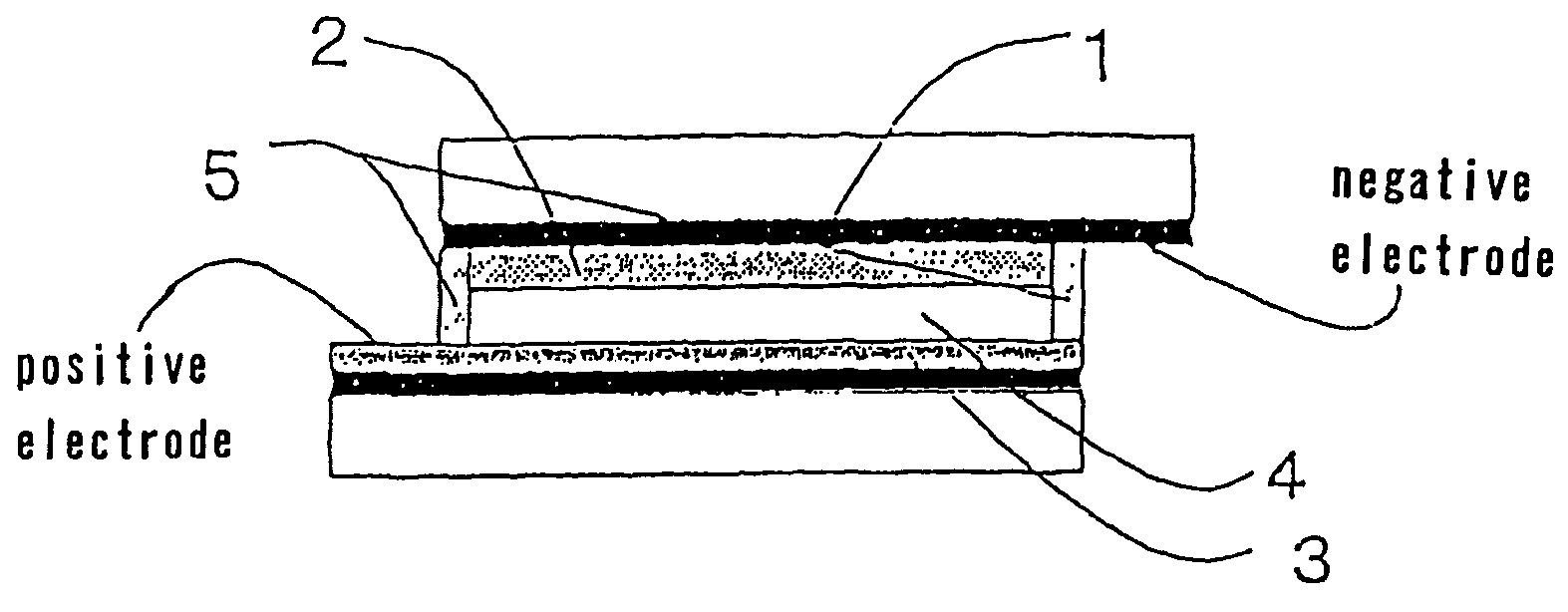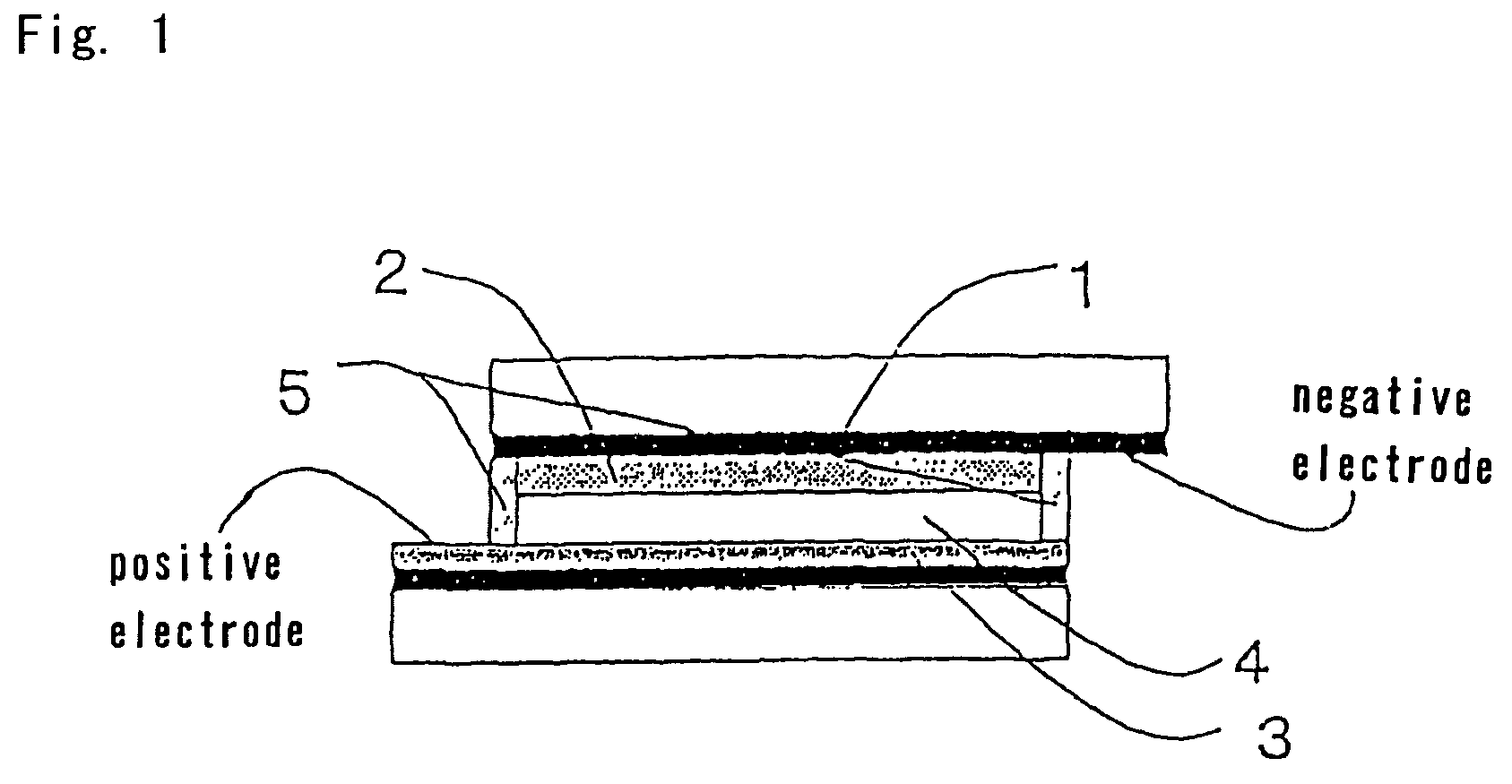Sealing agent for photoelectric conversion device and photoelectric conversion device using the same
a technology of photoelectric conversion device and sealing agent, which is applied in the direction of final product manufacturing, semiconductor/solid-state device details, sustainable manufacturing/processing, etc., can solve the problems of insufficient solar cell performance, insufficient solar cell itself performance, and large module size, and achieves high-resolution, high-resolution, and excellent adhesive strength.
- Summary
- Abstract
- Description
- Claims
- Application Information
AI Technical Summary
Benefits of technology
Problems solved by technology
Method used
Image
Examples
example 1
[0107]A compound having a glycidyl structure [bisphenol A epoxy resin (RE-301S, manufactured by Nippon Kayaku Co., epoxy equivalent 182 g / eq, 30 parts by weight; and Epomic R301, manufactured by Mitsui Chemical Co., epoxy equivalent 500 g / eq, 10 parts by weight)], a compound having a cyclohexene oxide structure (Celoxide 2021A, manufactured by Daicel Chemical Industries, Ltd., 30 parts by weight), a compound having an oxetane structure [BPDO (biphenyl dioxetane), manufactured by Ube Industries, Ltd., 30 parts by weight], and a silane coupling agent (epoxy silane, Saila Ace S510, manufactured by Chisso Co., 1 part by weight) were thoroughly mixed and heated at 70° C. After cooling the mixture to room temperature, 3 parts by weight of diaryliodonium salt (represented by the chemical formula 1, Rhodorsil Photoinitiator 2074, manufactured by Rhodia Chimie Co.) as a cationic polymerization initiator and 2 parts by weight of diethyl thioxanthone (represented by the chemical formula 6 belo...
example 2
[0110]The sealing agent (B) for the photoelectric conversion device of the invention having a viscosity of about 50,000 Pa·s was obtained by the same method as in Example 1, except that bisphenol A epoxy resin with an epoxy equivalent of about 250 g / eq and xylylene dioxetane (trade name XDO, manufactured by To a Gosei Co.) were used in place of RE-301S and BPDO, respectively.
example 3
[0111]The sealing agent (C) for the photoelectric conversion device of the invention having a viscosity of about 50,000 Pa·s was obtained by the same method as in Example 1, except that a hydrogenated product of bisphenol A epoxy resin (Adeca Resin EP 4080, manufactured by Asahi Denka Co.) was used in place of Celoxide 2021A.
PUM
| Property | Measurement | Unit |
|---|---|---|
| viscosity | aaaaa | aaaaa |
| particle diameter | aaaaa | aaaaa |
| particle diameter | aaaaa | aaaaa |
Abstract
Description
Claims
Application Information
 Login to View More
Login to View More - R&D
- Intellectual Property
- Life Sciences
- Materials
- Tech Scout
- Unparalleled Data Quality
- Higher Quality Content
- 60% Fewer Hallucinations
Browse by: Latest US Patents, China's latest patents, Technical Efficacy Thesaurus, Application Domain, Technology Topic, Popular Technical Reports.
© 2025 PatSnap. All rights reserved.Legal|Privacy policy|Modern Slavery Act Transparency Statement|Sitemap|About US| Contact US: help@patsnap.com



